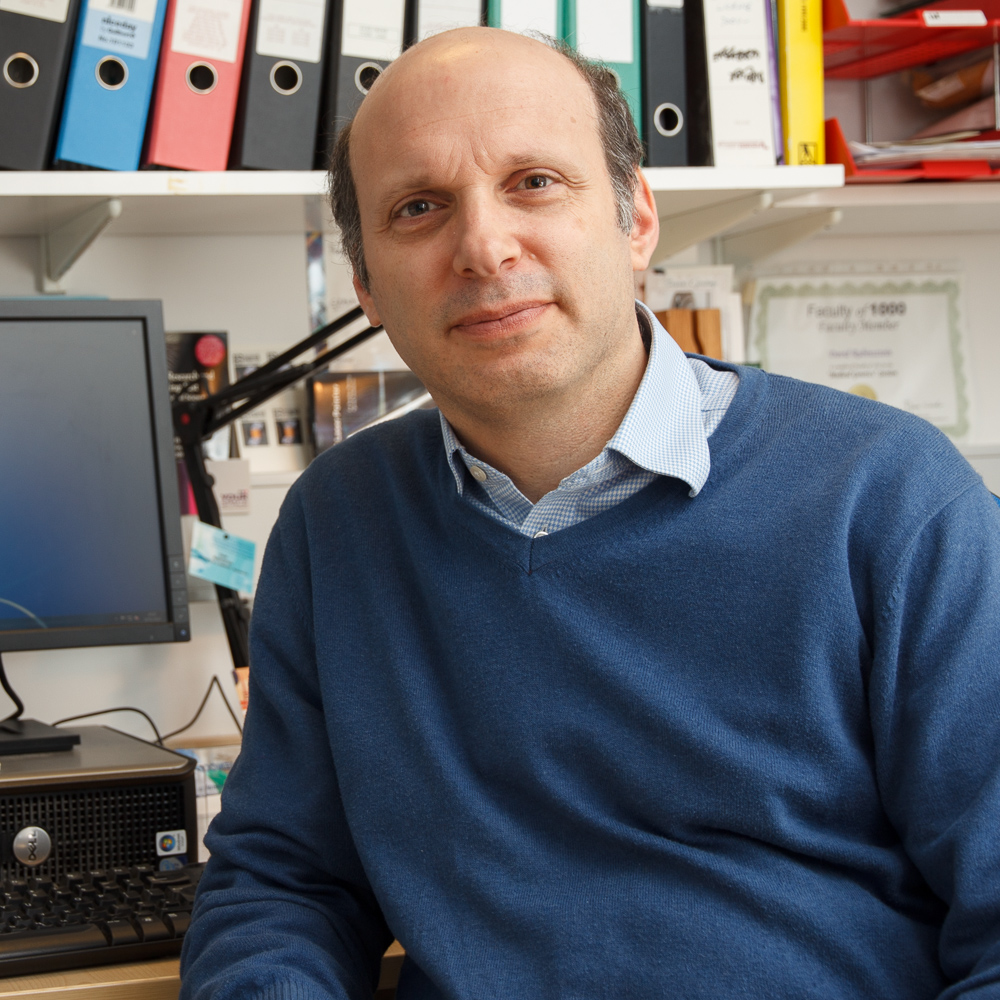Faculty of Health Sciences alumnus Professor David Rubinsztein of the University of Cambridge was recently elected as a Fellow of the Royal Society of London. He joined Isaac Newton, Charles Darwin and Albert Einstein in this prestigious society which acknowledges outstanding contributions to science. We caught up with Prof Rubinzstein to find out more about his career and recent achievement.
- When you graduated from UCT in 1993 what were your plans for your career?
After graduating from UCT medical school with an MBChB, I went on to do a BSc (Med) Hons and PhD in medical biochemistry. I wanted to become a clinician scientist doing laboratory-based medical research. I started to specialise in genetic pathology – laboratory medicine focussed on genetics. I was the first trainee in this speciality in the UK.
- Did you achieve them and what did you learn along the way?
I completed my specialist medical training in genetic pathology and then focussed on a research career in Cambridge. I was very lucky, as my mentor in Cambridge, Professor Malcolm Ferguson-Smith, encouraged me to develop my research while undertaking my specialist training. In those days, the training was more flexible than it is today, and so I could maintain publishing papers and developing a research focus while acquiring my specialist training. I am constantly learning. However, I think I have learned to try to make our work as robust and comprehensive as possible. I have also come to appreciate that interpersonal interactions are a critical component in running a laboratory and that a major role for the lab head is to support students and postdocs and create a stimulating and fun environment.
- In what ways did studying at UCT prepare you for your chosen path?
I received an excellent clinical and scientific training. For the latter, I was fortunate to be mentored by Professors Wieland Gevers, Deneys van der Westhuyzen and Gerry Coetzee. They fostered key ingredients for science, such as enthusiasm, rigour and inquisitiveness.
- Please tell us about some of your most important discoveries and their significance to your field
Many of the mutant proteins causing neurodegenerative diseases, like Parkinson’s disease, Huntington’s disease and various dementias, tend to aggregate and form clumps in the cytoplasm of cells and are toxic. We discovered that such proteins can be degraded by a process called autophagy. Autophagy is initiated by double-membraned structures, which engulf portions of cytoplasm. These autophagosomes can be likened to miniature rubbish trucks which collect unwanted and undesirable material within the cell. Autophagosomes ultimately fuse with lysosomes, the incinerators of the cell, where their contents are degraded.
My laboratory has focussed on testing if upregulation of autophagy may be a protective strategy in certain diseases. We showed that autophagy-inducing drugs enhance the removal of toxic proteins causing diseases like Parkinson’s disease and Huntington’s disease and thereby attenuate their toxicities in a range of animal models (flies, zebrafish and mice). Our data suggesting that autophagy upregulation may have therapeutic value in such diseases has gained significant momentum in the wider neurodegenerative disease field - this concept has been subsequently validated by many groups and now autophagy is considered an important target for neurodegeneration by pharma.
When our autophagy studies were initiated in 2001, the only known pharmacological way of chronically inducing autophagy was with the mTOR inhibitor, rapamycin. Although rapamycin is designed for long-term use in humans, it has side effects (unrelated to autophagy), which make it unattractive to patients who may need to take the drug for decades. We therefore set out to identify novel autophagy-upregulating compounds and pathways. With colleagues, we published the first large-scale autophagy drug screen which identified mTOR-independent compounds that induced autophagy and protected against mutant Huntington toxicity in cell and Drosophila models of Huntington’s disease. We subsequently performed a screen of compounds used in people for other purposes that revealed a novel extended pathway regulating autophagy. Drugs targeting this pathway were protective in fly and zebrafish models of Huntington’s disease. One of the drugs we identified, rilmenidine, has beneficial effects in a mouse model of Huntington’s disease, has minimal side-effects and has recently successfully completed a safety trial in Huntington’s disease patients.
On the other hand, we have shown that autophagy compromise contributes to protein misfolding and accumulation in various neurodegenerative diseases, including forms of motor neuron disease, lysosomal storage diseases, Lafora disease, forms of Parkinson’s disease, diseases caused by polyglutamine expansion mutations, like Huntington’s disease, and an Alzheimer’s disease risk locus (PICALM). In these cases, our work supports the concept that autophagy deficiency downstream of the primary mutation may be an important contributor to the cell compromise and protein accumulation characteristic of these diseases.
In summary, my laboratory has focussed on understanding the relevance of autophagy in neurodegenerative diseases, and has elucidated novel signalling and membrane trafficking events underlying the cell biology of this important degradation process.
- What do you enjoy most about what you do?
I enjoy looking at data and trying to understand what they may mean. I get great satisfaction from seeing how many of the students and postdocs in my lab blossom into fine scientists.
- What advice would you give to students who are considering a career in neuroscience?
I think that science is becoming ever more competitive. Young scientists need to be passionate about what they are doing, have thick skins to withstand rejection (of papers and grants), self-belief, and a real desire to drive a field forward with the best science they are capable of.

